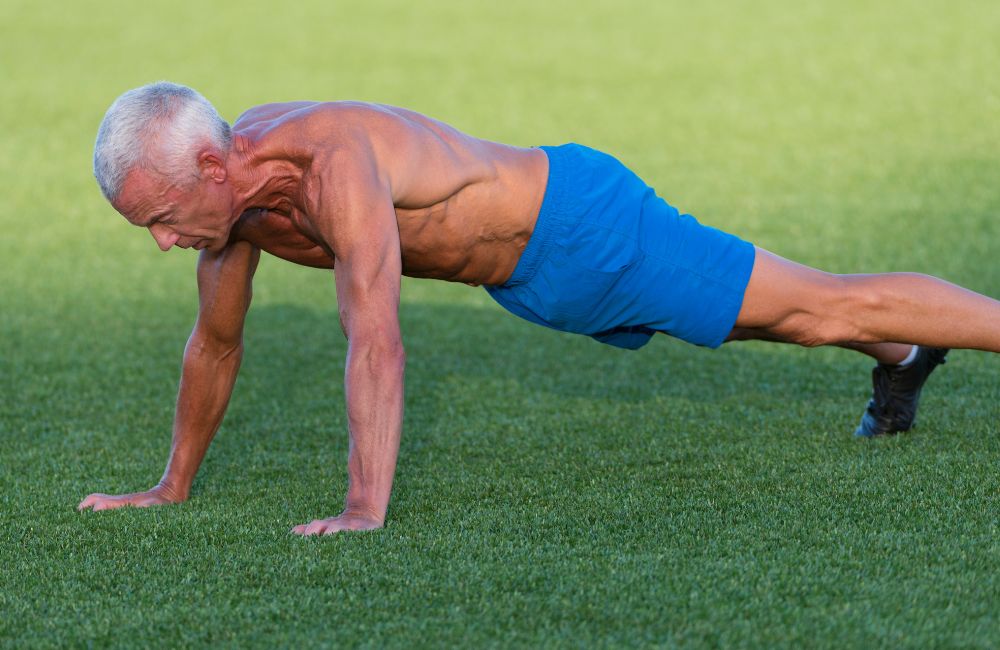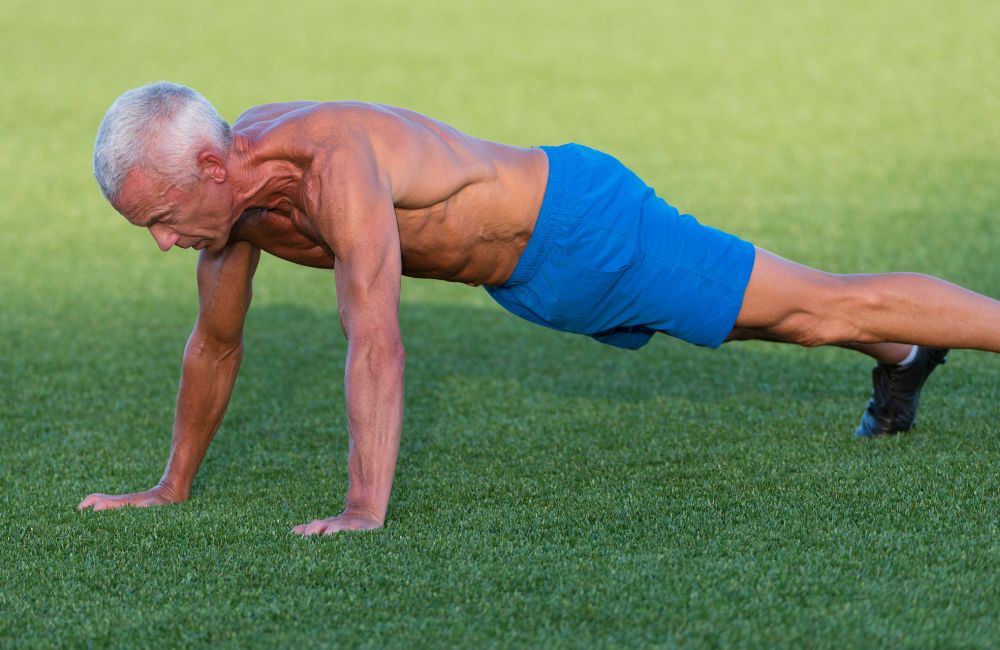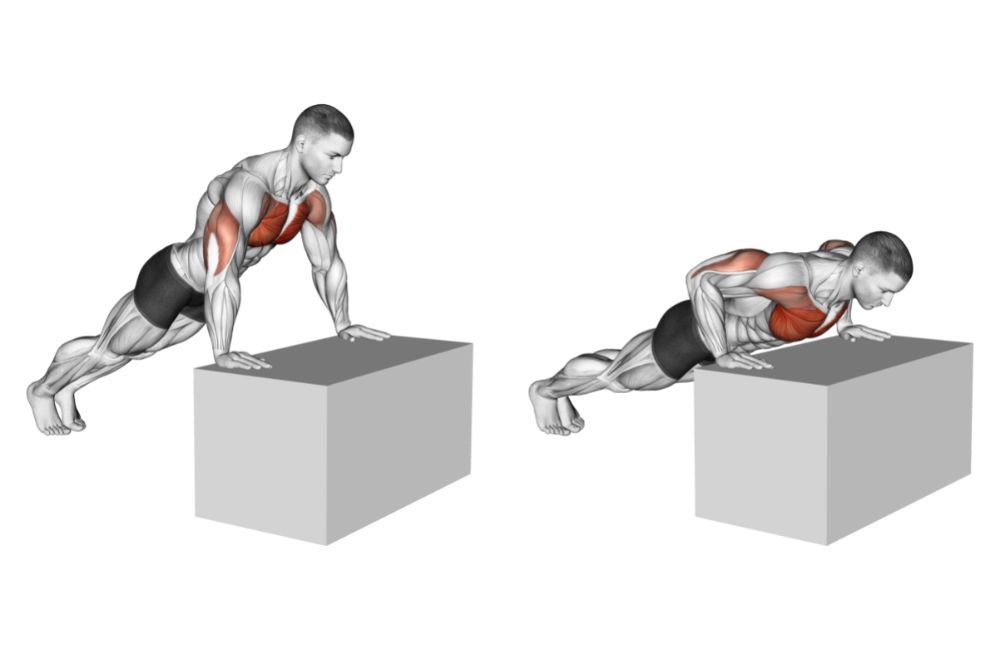
Incorporating strength training for seniors into your workout routine is essential for maintaining overall health and well-being. If strength training isn’t part of your workout, you’re missing out.
Strength training helps counter age-related muscle loss, and maintains your bone health. It also helps improve mobility, prevent falls and injuries, and ward off depression and cognitive decline.
Aging comes with numerous changes.
With time, our bodies go through many changes.
Our brains change, our bones change, and our muscles change.
Unfortunately, many of these changes do not occur in the direction we would prefer!
While we don’t yet have foolproof cures for the aging process, we can use exercise to counteract many of the effects of old age. Specifically, we can harness the power of strength training to keep our muscles and bones as strong as possible as we get older.
In this article, I’ll provide the 5 best strength training exercises you can use to keep yourself mobile and independent throughout life.
You’ll also like:
- Want to Age Well? Bulletproof Your Back and Spine With These Exercises
- Over 50? Here Are the 3 Most Important Exercises You Should Be Doing
The Best 5 Strength Training Exercises for Seniors

The following 5 exercises can be used in a variety of ways. However, I recommend that you perform all 5 movements in a single session, 3 times per week.
I further advise you to complete these moves in a circuit fashion, moving from one exercise to the next with as little rest as possible.
You should attempt to complete 5 rotations through the circuit, following the specific recommendations for reps and form as described below.
1. Pushups on Elevated Surface

Pushups are one of my favorite exercises for the upper body. They work tons of muscles, they can be done anywhere, and they can be modified to work for basically anyone.
This variation in the pushups makes them slightly easier. So, if you’re a pushup pro, feel free to do them on flat ground or even on a decline to make them tougher!
How to Perform:
- Place your hands on a bench or another firm, stable surface.
- At the same time, place your toes on the floor, far enough back from the bench that you are creating a straight line from your feet to your head.
- Slowly lower your chest down toward the bench.
- Once you’ve gone as low as you can, while keeping your back flat, push yourself back to the starting position.
- Repeat for 10-15 reps, for 3 sets per session.
2. Squats
Pushups may be king when it comes to upper-body exercises, but squats are the clear winner with regard to lower-body moves.
Squats are extremely functional and helpful for everyday activities, such as standing up from a chair.
Plus, squats work many muscles at once, leading to high caloric expenditure.
Thirdly, squats provide significant weight bearing throughout the body, leading to better bone health.
Last but not least, squats, much like pushups, are easy to modify to make them easier or harder.
How to Perform:
- Stand with your feet about shoulder-width apart.
- Next, slowly lower your buttocks down towards the ground, as if you are lowering into a seat. As you do this, bend your knees to enable you to move straight downward.
- Once you’ve lowered as far as you can comfortably (shoot for getting your thighs parallel to the floor), push yourself back into standing.
- Perform 3 sets of 12-15 reps per session.
3. Bridges
Bridges can be thought of as an accessory exercise, and one that is particularly useful for seniors.
This move strengthens the hamstrings and glutes. By keeping these muscles strong, you help to keep your hips and low back stable.
By increasing stability in these areas, you lessen the chances of developing low back pain or other orthopedic conditions. Best of all, bridges allow you to lay down while you exercise!
How to Perform:
- Lie flat on your back, with your knees bent and your feet flat on the floor.
- Press your feet into the floor as you lift your hips toward the ceiling.
- Hold this top position for 3 seconds, then slowly lower back down to the starting position.
- Complete 3 sets of 12-15 reps per session.
4. Dead Bugs
Just like bridges, dead bugs enable you to get a great workout while lying on your back.
This move seems easy, but once you learn how to get your abs engaged, you’ll quickly notice how tough this exercise really is.
There are many variations on the dead bug, so if you can’t get this version down right away, try it with just your arms, or just your legs first.
How to Perform
- Lie flat on your back with your knees bent and your feet flat on the floor.
- Reach your hands toward the ceiling, extending your arms upward.
- Next, lift both of your feet off of the ground, tucking your knees to your chest.
- Then, kick your right leg straight out, while you allow your left arm to fall backward behind you.
- At this point, you should be able to draw a straight line from your right foot, through your trunk, to your left fingertips.
- Hold this position for 3 seconds, then switch arms and legs.
- Continue to alternate in this manner, aiming for 10-12 reps per side, for 3 sets per session.
5. Bird Dogs
Bird dogs are analogous to the “hands-and-knees” version of dead bugs.
This exercise emphasizes the multifidi, glutes, and many other muscles throughout the legs and lower back. Bird dogs are a terrific exercise that everyone, of every age, should have in their arsenal.
How to Perform
- Start on your hands and knees, with your knees under your hips and your hands under your shoulders.
- Keeping your back straight, extend your right arm out in front of you and simultaneously kick your left leg back behind you.
- Hold this position for three seconds, then return to the starting position.
- Repeat this movement on both sides for 10-12 reps per set, for 3 sets per session.
Strength Training for Seniors
Truthfully, it doesn’t take much to get stronger, even in our later years. With just a simple, 5 exercise circuit, performed 3 days per week, you can overcome many effects of old age.
Give this series a try and see what it can do for you!
Works Cited
- Jaul, E., & Barron, J. (2017). Age-Related Diseases and Clinical and Public Health Implications for the 85 Years Old and Over Population. Frontiers in public health, 5, 335. https://doi.org/10.3389/fpubh.2017.00335
- Berg, N. V. D., Rodríguez-Girondo, M., de Craen, A. J. M., Houwing-Duistermaat, J. J., Beekman, M., & Slagboom, P. E. (2018). Longevity Around the Turn of the 20th Century: Life-Long Sustained Survival Advantage for Parents of Today’s Nonagenarians. The journals of gerontology. Series A, Biological sciences and medical sciences, 73(10), 1295–1302. https://doi.org/10.1093/gerona/gly049


